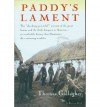Currently reading
Paddy's Lament, Ireland 1846-1847: Prelude to Hatred
Pivot: The Only Move That Matters Is Your Next One
When in French: Love in a Second Language
Beyond the Job Description: How Managers and Employees Can Navigate the True Demands of the Job
Vision and Art: The Biology of Seeing
Achieving Your Potential As A Photographer: A Creative Companion and Workbook
Reclaiming Conversation: The Power of Talk in a Digital Age
Picture Perfect Practice: A Self-Training Guide to Mastering the Challenges of Taking World-Class Photographs (Voices That Matter)
Man's Search for Meaning
Terms of Service: Social Media and the Price of Constant Connection
Mosaic of Thought: Teaching Comprehension in a Reader's Workshop
 I'm reading a lot about reading these days -- how people read, how they learn to read, how to teach reading, etc. This book is an interesting mix of personal experience as a reading workshop teacher/specialist/consultant and a bit of the theory. She refers to the seminal work of Don Graves, Mary Ellen Giacobbe, Jane Hansen, Georgia Heard, and Lucy Calking to help teachers create learning environments that rested on four key elements: time, ownership, response, and community -- but they are not listed in the bibliography. Just noting them down for follow-up..."Listening to my sleeping house, I alternate between worry that no matter what we do it will never be enough, and deep satisfaction in the work we've done." p.10"Far too many of our children, however, don't have an awareness of their own comprehension. They don't have a well-developed sense of what they need to know when reading a piece or what they need to do when their comprehension breaks down. To address these issues, we need to monitor our awareness of our own thinking processes while reading, and we must model those processes frequently. Modeling is an essential, inestimably important step in helping children observe and then use the mental processes used by proficient readers.In introducing the notion of monitoring one's reading I would think out loud with the students so they can listen to the exact thinking process I used to unravel the meaning as I read. After children have been exposed to explicit modeling, there are a myriad of ways to help them practice the strategies in small groups, in pairs, and individually." p.39As the teacher reads aloud, the students hold up 1 finger (they understand), or 2 fingers (they don't understand). They also use post-it notes when reading independently: ? marks; "PS" -- I had a problem, but I solved it (used in conferences -- how did you solve the problem?); "S" -- this was a surprise; "W" -- I wish I could write like this; "T" -- I need to talk to someone or write about this to understand it better. "Coding and the finger strategy are just two concrete ways to help children become aware of their comprehension process and remind them that they need to solve comprehension problems actively." p.40
I'm reading a lot about reading these days -- how people read, how they learn to read, how to teach reading, etc. This book is an interesting mix of personal experience as a reading workshop teacher/specialist/consultant and a bit of the theory. She refers to the seminal work of Don Graves, Mary Ellen Giacobbe, Jane Hansen, Georgia Heard, and Lucy Calking to help teachers create learning environments that rested on four key elements: time, ownership, response, and community -- but they are not listed in the bibliography. Just noting them down for follow-up..."Listening to my sleeping house, I alternate between worry that no matter what we do it will never be enough, and deep satisfaction in the work we've done." p.10"Far too many of our children, however, don't have an awareness of their own comprehension. They don't have a well-developed sense of what they need to know when reading a piece or what they need to do when their comprehension breaks down. To address these issues, we need to monitor our awareness of our own thinking processes while reading, and we must model those processes frequently. Modeling is an essential, inestimably important step in helping children observe and then use the mental processes used by proficient readers.In introducing the notion of monitoring one's reading I would think out loud with the students so they can listen to the exact thinking process I used to unravel the meaning as I read. After children have been exposed to explicit modeling, there are a myriad of ways to help them practice the strategies in small groups, in pairs, and individually." p.39As the teacher reads aloud, the students hold up 1 finger (they understand), or 2 fingers (they don't understand). They also use post-it notes when reading independently: ? marks; "PS" -- I had a problem, but I solved it (used in conferences -- how did you solve the problem?); "S" -- this was a surprise; "W" -- I wish I could write like this; "T" -- I need to talk to someone or write about this to understand it better. "Coding and the finger strategy are just two concrete ways to help children become aware of their comprehension process and remind them that they need to solve comprehension problems actively." p.40













